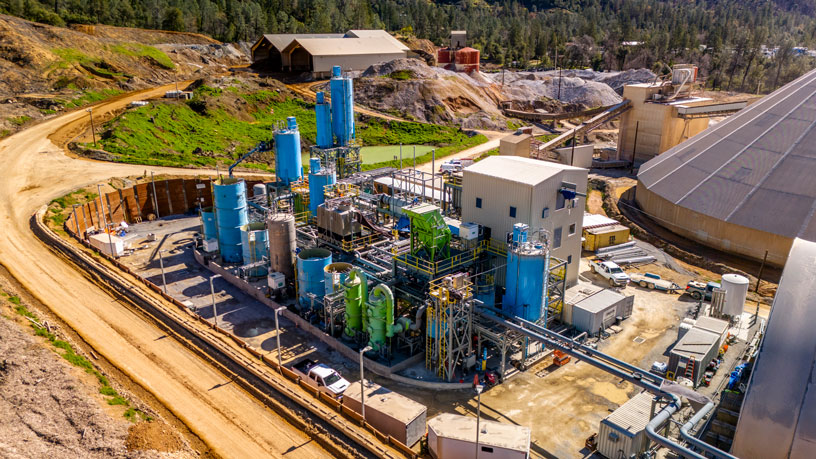Fortera has formally commenced low-carbon ReAct cement processing at its ReCarb facility, adjacent to CalPortland’s Redding, Calif., cement plant. It is North America’s first industrial green cement and carbon dioxide mineralization facility and one of the largest of its kind in the world.
The Redding ReCarb Plant is equipped for annual capture of 6,600 tons of carbon dioxide from a flue stack serving the CalPortland plant and production of 15,000 tons of ReAct powder. Fortera anticipates deliveries later this quarter – likely supersacks for starters – to concrete producers, who can use ReAct as a supplementary cementitious material in blended binders, or as a full portland cement replacement.
“Redding is the first of many plants in Fortera’s future as a green cement producer, and achieving this milestone brings the industry that much closer to realizing zero-carbon cement, which is critical for both our continued infrastructure and the health of our planet,” said Fortera CEO Ryan Gilliam. “While significant, we recognize this is one step in a much larger effort to reach commercialization globally, and we are committed to scaling our technology using existing infrastructure to mobilize widespread adoption of low and zero-carbon cement.”

On a ton-for-ton basis against portland cement, Fortera measures a 70% reduction in carbon emissions tied to ReAct, whose main compound is a rare form of calcium carbonate. ReAct testing and field concrete demonstration candidates include CalPortland ready mixed operations and Vulcan Materials’ Central Concrete Supply business.
ReCarb technology reduces carbon emissions throughout the value chain without imposing substantial capital costs and creates a product that is just as effective as ordinary cement, noted Fortera. ReCarb also increases overall product output: When limestone is heated in a kiln to make ordinary cement, nearly half is lost as CO2. Mineralizing calcining phase emissions through ReCarb yields a ton of green cement for every ton of limestone feedstock used. Further, ReCarb reduces energy consumption by using a lower kiln temperature and creates a path to zero CO2 cement when processed with renewable energy-powered equipment.



